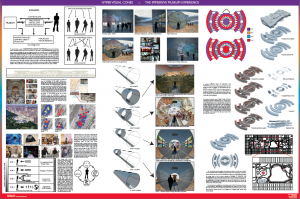Narrative:
In the year 2048, the world will constantly look forward into the future and to derive ideas to better it, however the preservation of history is significant and this is where the maintenance of museums is important. Museums will evolve to become community centers, a social gathering space, to encourage society to visit the museums frequently. The merging of education and entertainment creates a suitable environment that assists in a variety of activities for all age groups. The use of digitalization and advanced virtual structures give a number of immersive experiences to allow visitors to fully participate and potentially transform the museum space through their use as well as spreading data and feedback at a fast pace. Museums will continue to be a destination place and become a haven to escape from reality and step into the virtual environment full of history and knowledge.
_________________________________________________________
Scales:
Pod interfaces contained in the museum:
– connected through wireless networking
– projections / holograms / 3D
– recreating existing environment / new virtual worlds
– interchangeable and modified
– obtain data (pictures, holographs, writing, physical objects) from defined periods of the past
– digitally stored and processed
– show how to view artifacts / instructional
– expanding internal structure over time / extend out of the physical space
Outside networks connecting virtual museums:
– mediator / access points
– virtual tourism
– inhabit cyberspace
– create community to connect the architecture / museum
– traveling museums
– local? Global?
– Partnership with schools and universities
– Merged educational experience
_________________________________________________________
What sort of environment will the museum evolve into in the year 2048 and how to design a space to encourage people to come to the museum?
Advancing Technology:
– digital equipment and tools
– virtual worlds (extension of physical space)
– augmented reality perfected
– virtual museum at remote locations (dispersed around the world)
– able to transform museum place by visitor’s use
– exhibit a larger amount of objects in a limited space
Experience Realms:
– degree of participation from passive to more active (intersection of immersive and passive)
– intersection of active and absorbing (educational)
– absorption to immersion (connection of the visitor to the experience)
– spatial – immersive environment
– consume and contribute
Economic Issues:
– popular destination and landmark
– or no longer need to make trip to museum (use computers/technology-on-hand to view exhibitions/artifacts – Google Art Project)
– community centers
– merge entertainment, education, aesthetics, escapism
– shapes the national and cultural aspects of the environment
– instrument of urban understanding and urban change
Urban Relationship:
– cultural tourism spot
– memorialization
– symbolism
– agents of change both social and economic
